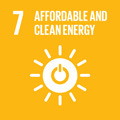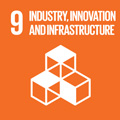- Docente: Gabriele Bellani
- Credits: 6
- SSD: ING-IND/06
- Language: Italian
- Teaching Mode: Traditional lectures
- Campus: Forli
-
Corso:
Second cycle degree programme (LM) in
Aerospace Engineering (cod. 5723)
Also valid for Second cycle degree programme (LM) in Aerospace Engineering (cod. 5723)
Learning outcomes
Aim of the course is to give the student the fundamental knowledge to plan and execute an experimental campaign in Aero and Fluid-dynamics, as well as the knowledge of the most important instruments and experimental techniques in Aerodynamics. Specifically, at the end of the course the student will be able to: - Determine the relevant variables and non-dimensional parameters for a given fluid-dynamic system; - Choose and/or design the most appropriate experimental setup and measurement instrument - Critically evaluate and analyze the experimental data together with the associated uncertainty"
Course contents
- Introduction:
- Role of experiments in aerodynamics;
Planning the experiment:
-Non-dimensional analysis and the PI-theorem;
The measurement chain:
- Sensor-transducers-data acquisition;
- Sampling frequency and sampling time;
Measurment tools and instruments:
- Pressure measurements
- Hot-wire measurements
- Force measurements
- Optical methods: LDV, PIV
- Wind Tunnels;
Data analysis:
- Data processing
- Uncertainty evaluation
- Reporting
Readings/Bibliography
1. Teacher's slides and notes avaliable on e-learning platform
Coursebook: Instrumentation, Measurements, and Experiments in Fluids – second edition, Ethirajan Rathakrishnan, CRC Press
Suggested literature:
-The Pi-Theorem – applications to Fluid Mechanics,
L.P. Yann; (2012)
-Low-Speed Wind Tunnel Testing, Jewel B. Barlow
Teaching methods
Lectures held by the teacher where the subjects are indroduced and discussed by the teacher;
Data analysis exercises requiring a laptop and Matlab;
Seminars held by international lecurers on advanced experimental and numerical techniques;
Visit to the experimental fluid mechanics laboratory and wind-tunnel measurements;
As concerns the teaching methods of this course unit, all students must attend Module 1, 2 online [https://www.unibo.it/en/services-and-opportunities/health-and-assistance/health-and-safety/online-course-on-health-and-safety-in-study-and-internship-areas], while Module 3 on health and safety is to be attended in class. Information about Module 3 attendance schedule is available on the website of your degree programme
Assessment methods
The examination is mainly an oral with 2 or 3 questions on the different subjects covered in class (including seminars). For each question, the student will be given some time to wirte down the main points to be discussed with the teacher.
The student is expected to clearly explain all the relevant aspect of the experimental or analysis techniques, including physical principles behind the measurement technique, all the mathematical aspects discussed in class, and the technical issues connected to the application
Teaching tools
PPT slides, whiteboard, PC excercises, Hands-on laboratory (if allowed)
Office hours
See the website of Gabriele Bellani
SDGs


This teaching activity contributes to the achievement of the Sustainable Development Goals of the UN 2030 Agenda.
